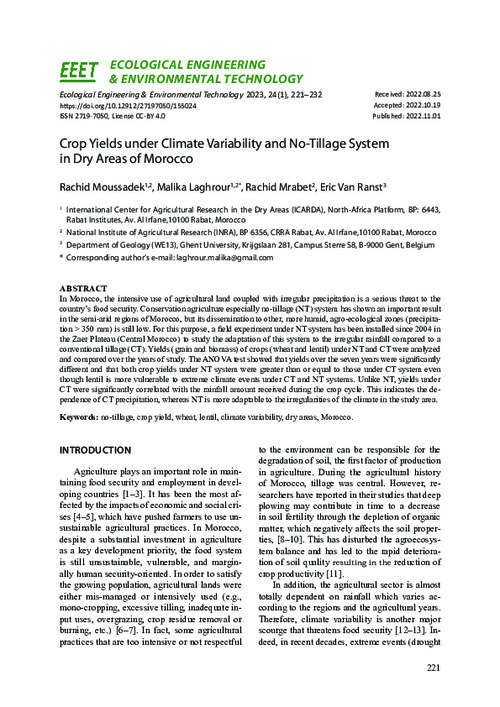Crop Yields under Climate Variability and No-Tillage System in Dry Areas of Morocco
Abstract
In Morocco, the intensive use of agricultural land coupled with irregular precipitation is a serious threat to the country’s food security. Conservation agriculture especially no-tillage (NT) system has shown an important result 
in the semi-arid regions of Morocco, but its dissemination to other, more humid, agro-ecological zones (precipita tion > 350 mm) is still low. For this purpose, a field experiment under NT system has been installed since 2004 in the Zaer Plateau (Central Morocco) to study the adaptation of this system to the irregular rainfall compared to a conventional tillage (CT). Yields (grain and biomass) of crops (wheat and lentil) under NT and CT were analyzed and compared over the years of study. The ANOVA test showed that yields over the seven years were significantly different and that both crop yields under NT system were greater than or equal to those under CT system even though lentil is more vulnerable to extreme climate events under CT and NT systems. Unlike NT, yields under CT were significantly correlated with the rainfall amount received during the crop cycle. This indicates the dependence of CT precipitation, whereas NT is more adaptable to the irregularities of the climate in the study area

